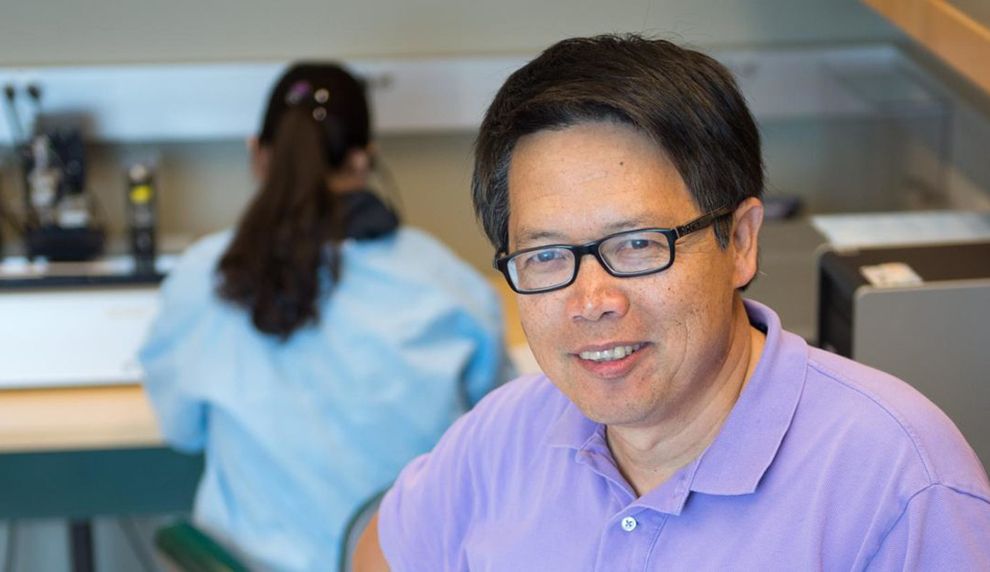
Washington State University researchers have developed a portable biosensor that makes it easier to detect harmful bacteria.
The research team, led by Yuehe Lin, professor in the School of Mechanical and Materials Engineering and the Paul G. Allen School for Global Animal Health, recently published the work in the journal Small.
As in the case of several recent food recalls, harmful pathogens are most often only discovered when people start getting sick. Researchers have been working to develop better biosensors that could quickly, accurately, and automatically detect everything from cancer biomarkers in the blood to harmful bacteria in the environment. Even tiny amounts of pathogens can create serious health risks, but the available sensors are unable to quickly and easily detect these quantities.
The WSU research team created a simple sensor that is able to detect and amplify the signal of the food pathogen Escherichia coli (E. coli) 0157:H7, which can cause severe diarrhea and kidney damage in people.
Nanoscale engineering key
The key to a better sensor is maintaining a large amount of enzymes with high activity for detecting antigens in a sample. To address this issue, the researchers developed a particle at the nanoscale that includes organic and inorganic components and looks like a tiny flower. Smaller than a speck of dust and made up of a group of molecules, the nano-sized flower and petals provide a large surface area for immobilizing the highly active enzymes that are needed to detect the bacteria at low levels.

The nanoflower is able to recognize the bacteria and amplify its signal so that it can be seen with a simple handheld pH meter or pH indicator paper strip.
“We want to take these nanoflowers and create a simple-to-use, handheld device that anyone can use anywhere,” Lin says. “It’ll be as simple as using a pregnancy test strip or a glucose meter.”
The researchers have filed a patent for the handheld device concept and are working to switch out components of the nanoflower to detect disease markers as well as other pathogens such as salmonella.
Interdisciplinary effort received national funding
The research team includes Lin and his group at the WSU Voiland College of Engineering and Architecture and his collaborator, associate professor Meijun Zhu from WSU’s School of Food Science. The work was partly supported by the U.S. Centers for Disease Control and Prevention/National Institute for Occupational Safety and Health.
The research is in keeping with WSU’s Grand Challenges, a suite of research initiatives aimed at large societal issues. It is particularly relevant to the challenge of Sustaining Health and its theme of changing the course of disease.
The threat from foodborne illnesses
E. coli bacteria typically live in the intestines of people and animals. Most E. coli are, in fact, part of a healthy human intestinal tract. But some E. coli can cause illness, either diarrhea or illness outside of the intestinal tract. The types of E. coli that can cause diarrhea can be transmitted through contaminated water or food, or through contact with animals or persons.
According to the CDC, each year roughly 1 in 6 Americans (48 million people) get sick, 128,000 are hospitalized, and 3,000 die of foodborne diseases.
Among the foods most associated with foodborne illness:
- Raw foods of animal origin such as raw meat and poultry, raw eggs, unpasteurized milk, and raw shellfish
- Foods that combine the products of many animals, such as bulk milk, pooled raw eggs, or ground beef
- Fruits and vegetables consumed raw
The CDC has conducted disease outbreak investigations involving flour, frozen vegetables, raw milk, pistachios, and live poultry in recent months.
Lin among world’s most highly cited researchers
Last fall, Lin was named by Thomson Reuters among the top 1 percent of cited scientific researchers in the world for articles published between 2003-13. He is one of approximately 3,000 researchers representing 21 scientific fields included on the 2015 list, which represents “some of the world’s most influential minds,’’ according to the Thomson Reuters website. He was listed in the chemistry category, among the top 150 scientists in the world.
In July, Lin was included on the 2016 list of “Most Cited Researchers in Materials Science and Engineering,” based on the Elsevier Scopus database. Elsevier is a global company that provides information solutions to science, health, and technology professionals.
Lin, who also holds a joint appointment at Pacific Northwest National Laboratory, focuses his efforts on nanotechnology, particularly on the development of small-scale devices, materials, and analytical systems for biomedical diagnosis, drug delivery, and energy and environmental applications.
He has received funding from the National Institutes of Health, the CDC, and U.S. departments of Energy and Defense. He holds more than 10 patents, half of which have been licensed to industrial partners for commercialization.
He has more than 380 peer-reviewed publications and they have been cited more than 32,000 times. He has an h-index, a measure of a scientist’s productivity and impact, of 92, according to Google Scholar.
Lin is a fellow of the American Association for the Advancement of Science, Royal Society of Chemistry, and American Institute of Medical and Biological Engineering. He holds a Ph.D. in environmental chemistry from the University of Idaho.